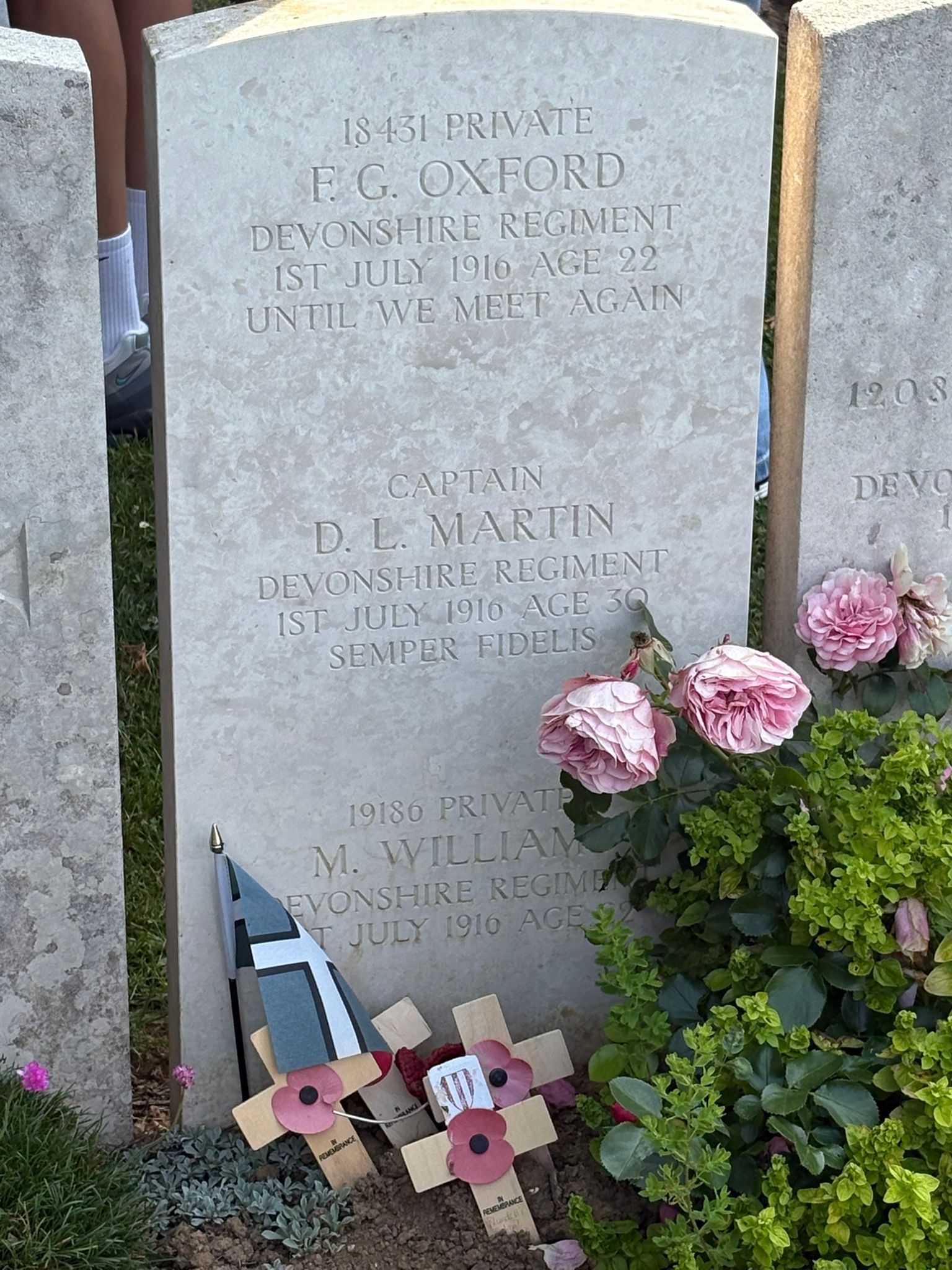
On 12-13th June, 45 students and 5 staff from Sir Harry’s went on a school trip the First World War battlefields of the Somme in France.
Here’s the perspective of Mr Tomlin, (trip leader and Curriculum manager for History):
‘I’ve been fascinated by the Great War since being taken on a school trip myself back in the mid 1990s, and I count myself lucky that I now get to share my passion for the history of this period with students. I’ve been leading battlefield tours for about 13 years now, and it is one of the great honours of my career to be able to take successive groups of students to these places.
This time, we were blessed with wonderful weather, and the Somme battlefields looked beautiful at times. It was easy to imagine what it would’ve been like in similar weather on 1st July 1916 – the opening day of the Somme and the worst day in the history of the British Army. Students were taken to various locations relating to that first day, including the Sheffield Memorial Park where the Northern ‘Pal’s battalions’ met their tragic end, Newfoundland Park (where the Newfoundland Regiment suffered some 90% casualties), and the Devonshire Cemetery, where students learned about the story of war poet W N Hodgson and his death on that day. It was hard not to be moved as Mr Ashworth read out Hodgson’s powerful poem ‘Before Action’ over his grave.
We also visited the Sunken Lane, where Geoffrey Malins filmed some of the most iconic images of the First World War that were later seen by millions in his ‘Battle of the Somme’ film. Sitting in the same spot where the Lancashire Fusiliers sat on 1st July, and seeing their faces immortalised in images from Malin’s film, the gap of 109 years between then and now seemed to melt away, and it felt like we could almost reach out and touch the past. At the Dartmoor Cemetery, near what was once a dressing station, a student read out the Victoria Cross citation of Private Miller over his grave, and we listened to Mrs Lancaster read out the devastatingly sad last letter of Lieutenant Townsend to his parents. I personally can never listen to that letter without being moved.
Students also received a private tour of the restored trenches in the Thiepval Wood which they found fascinating. We finished our tour by visiting the Thiepval Memorial to the missing, where many Whittlesey men are named, before stopping at the Warlencourt cemetery where we had a short service of remembrance and laid our wreath there on behalf of the staff and students of Sir Harry Smith Community College.
I was immensely proud to see so many of our students engaging with the history of these places, looking at the sad inscriptions on the graves, and thinking about all of those who gave up so much. It fills me with confidence that the important history of these places will not be forgotten by the next generation.




